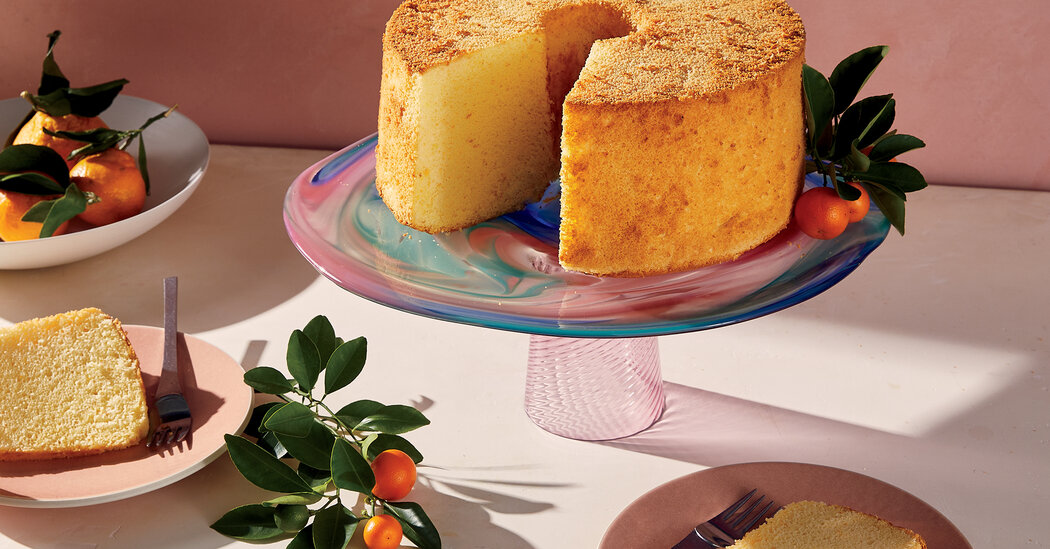For two decades, Baker refused to divulge his secret. He finally cracked in 1947 and revealed all to General Mills. (How much he was paid he took to the grave when he died in 1974.) Instead of butter, he used vegetable oil in a batter thick with yolks and folded together with glossy peaks of whipped egg whites, curling at the tips. The company unveiled the recipe the following year in a pamphlet titled “Betty Crocker Chiffon.”
How is “chiffon” a word that means both a rag — a castoff piece of cloth — and the lustrous fabric that lets the light through, that makes the most halfhearted attempt to hide the body behind? The cake was called chiffon for its weightlessness, but the name conjures negligees too, and the power of illusions. It is almost nothing, this cake, and yet so rich: angel and devil at once.
In the United States, the novelty has worn off. Chiffon cake has a mostly retro appeal now. But in Asia, its lightness — its kinship to clouds — has brought it enduring fame. “Not many Asian cuisines have a tradition of heavy desserts,” says Christopher Tan, the author of the cookbooks “NerdBaker” (2015) and “The Way of Kueh” (2019). In Singapore, where he lives, the temperature and the humidity are enemies of more traditional cakes. It’s a relief not to have to cream butter for 20 minutes, a process that “can go belly up very quickly,” Tan says.
In doing research for his cookbooks, Tan found a news item from 1952 — when Singapore was still a British colony — about a bake sale featuring chiffon cakes, held by the local Women’s Auxiliary of the American Association. By the early 1980s, the cake was so popular that the Australian company White Wings developed a box mix specifically for the Singapore market, laced with pandan, whose flavor falls somewhere among hazelnut, rose and a freshly mowed lawn after rain.
Tan started teaching chiffon-cake workshops 15 years ago. The most difficult part, he says, is beating the egg whites properly. Like Baker, he has a secret: He mixes a little potato starch (which absorbs more liquid than other starches) into the meringue, to guard against deflating. (The idea came from making a pavlova and seeing how adding cornstarch gives it a soft, marshmallowy texture but also lends stability.)
This content was originally published here.

